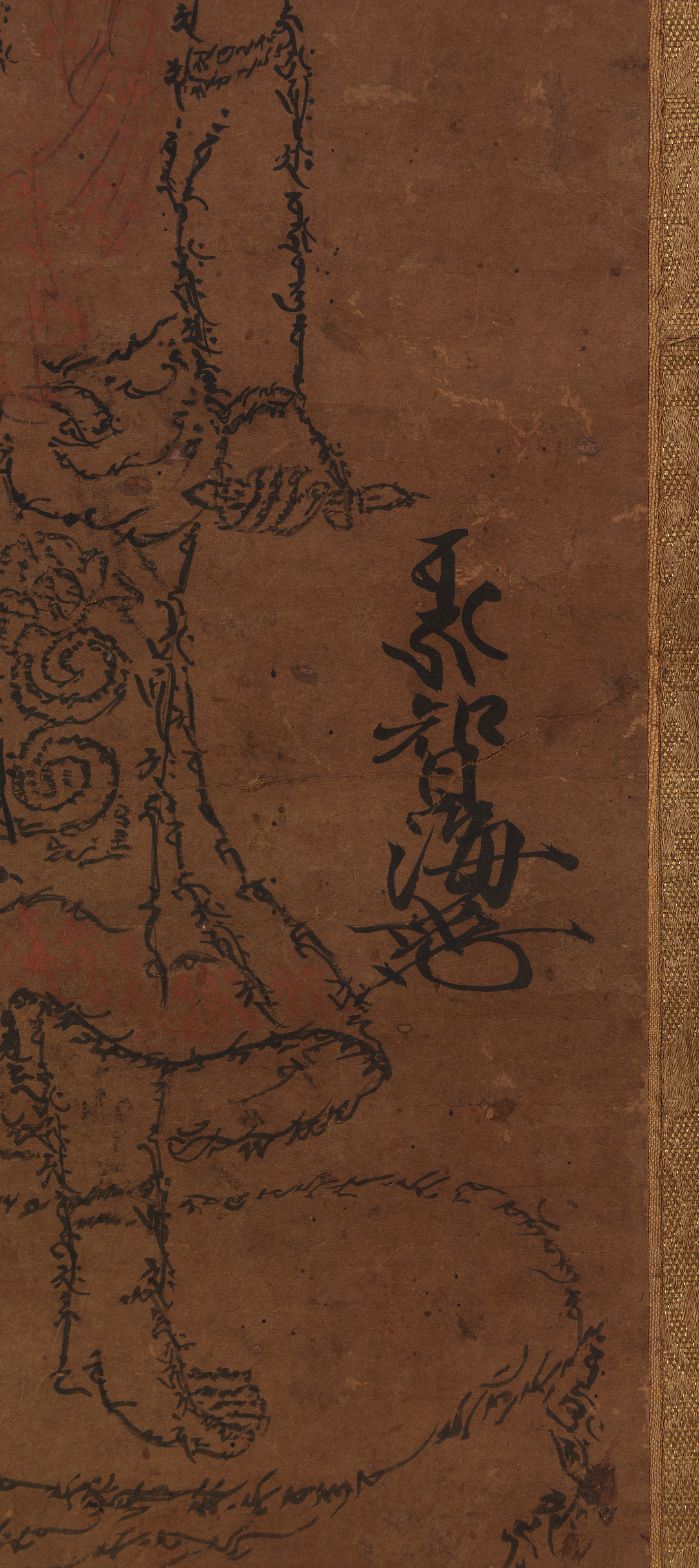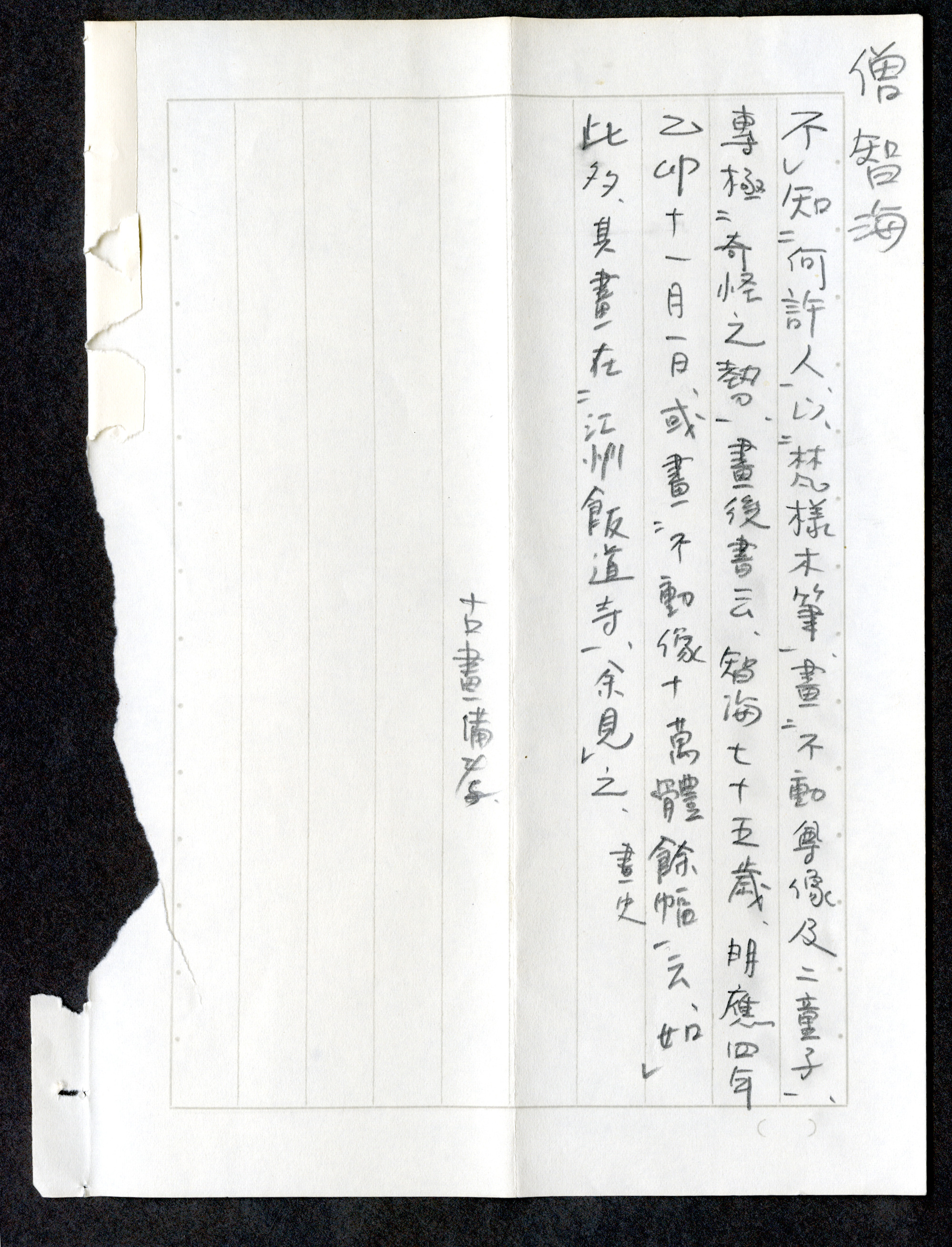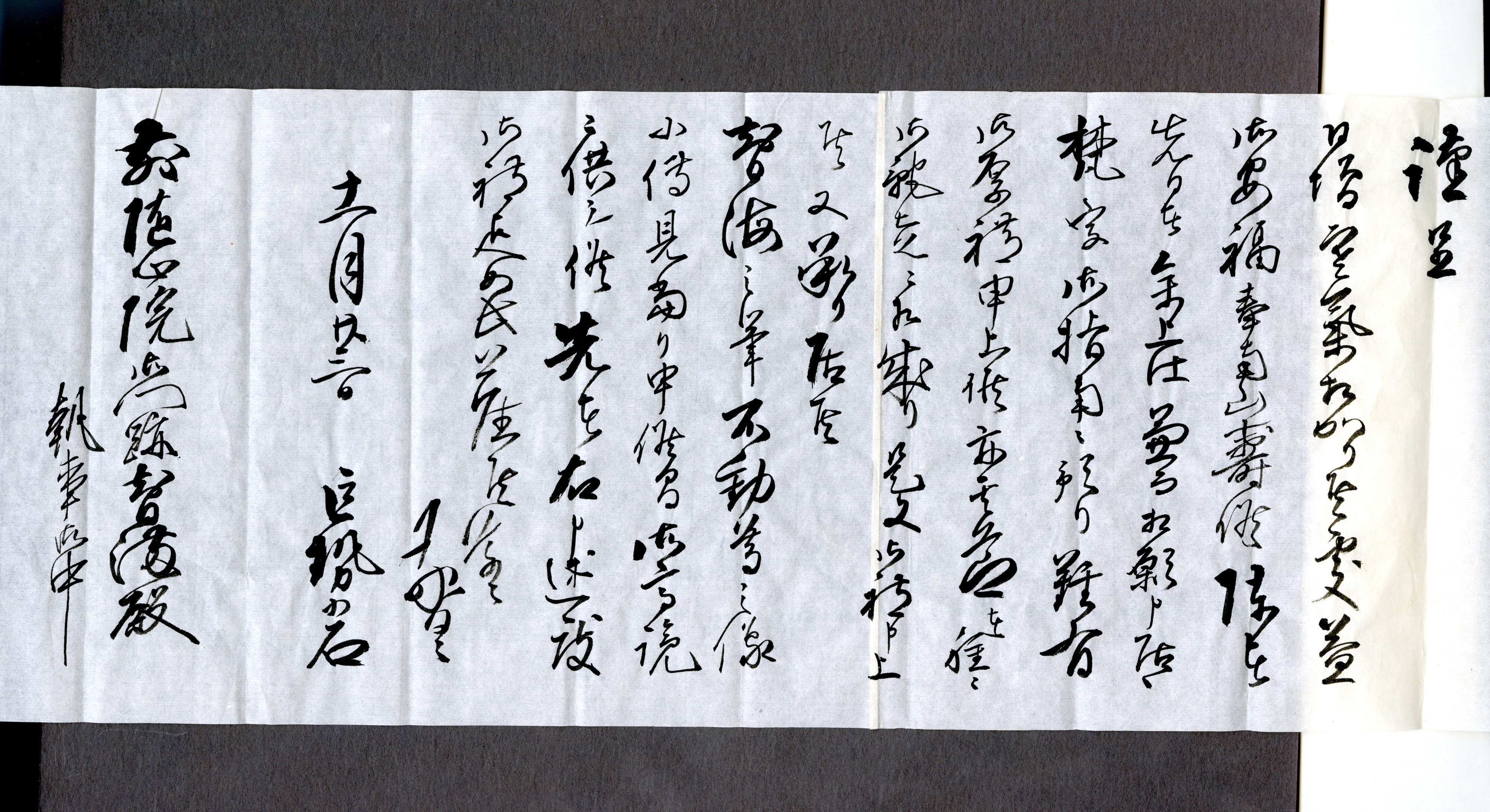Fudō Myōō with Four Attendants, Outlined in Seed Syllables
Chikai 智海 Japanese
Not on view
His name meaning “immovable wisdom king,” Fudō Myōō (Sanskrit: Acala-vidyaraja) represents the wrathful aspect of the Cosmic Buddha Dainichi (see the large statue to the left of the Buddhist altar). As in the two sculptures of Fudō displayed nearby, in this painting the Buddhist protective deity holds a wisdom-sword in his right hand and a lasso, outlined in red, in his left. He and his four youthful attendants (dōji) are circumscribed in tiny sacred Sanskrit characters called “seed syllables” (shuji), rendered in black ink. The syllables that form the five figures’ attributes are outlined in red ink.
The monk Chikai, based at Kono Shrine near Amanohashidate (Kyoto Prefecture), was associated with the Shingon (Esoteric) sect of Buddhism and known as a prolific painter of Fudō images in his day, though only a few examples survive.
This image cannot be enlarged, viewed at full screen, or downloaded.
This artwork is meant to be viewed from right to left. Scroll left to view more.






